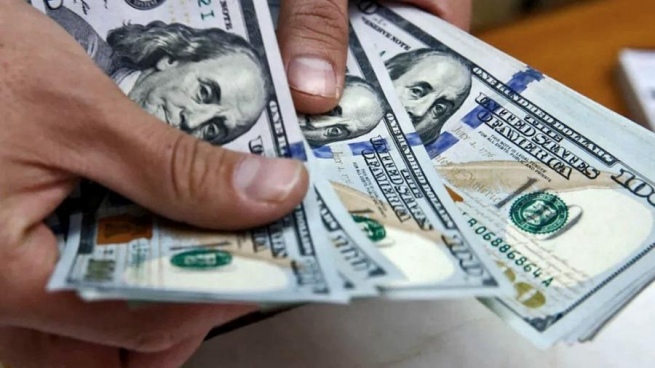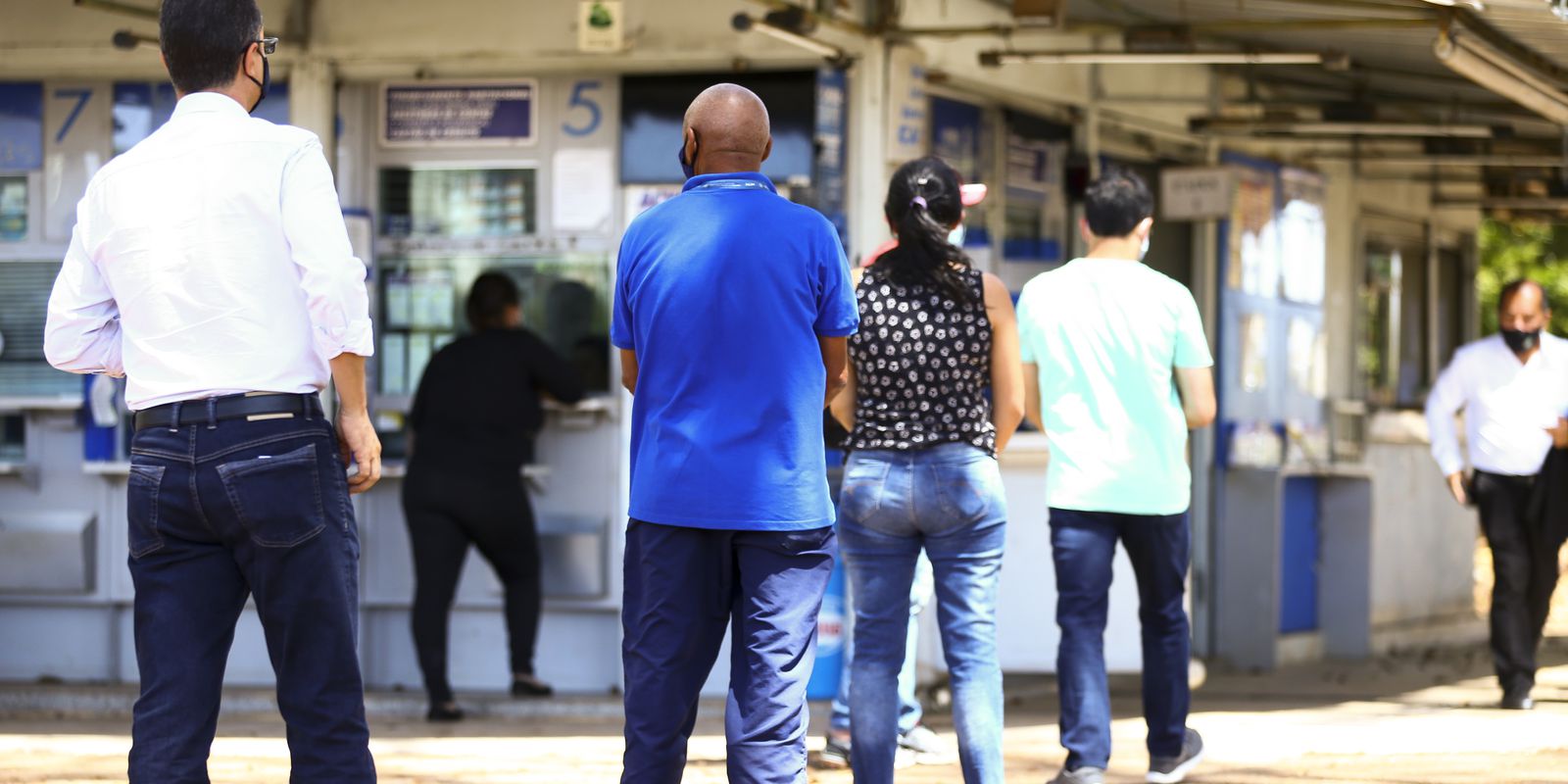The Central Bank (BCRA) accumulated purchases in the exchange market in the week for US$ 1,044 millionencouraged by the implementation of the exchange rate temporary special for the export of soybeans that was launched last Monday.
The purchases in the Single and Free Exchange Market (MULC) take place after the Ministry of Economy made official the application of an exchange rate of 200 pesos per dollar for soybean exports until September 30.
The measure was agreed with the main exporting complexes, which undertook to liquidate soybeans and derivatives for at least 5,000 million dollars.
The Central closed the trading session this Friday with a positive balance of US$ 178 million, so since the foreign exchange settlement began, the monetary authority has already bought around 1,044 million dollars.
In this way, Added to the purchase made are the US$ 300 million from Tuesday’s session, the US$ 140 million acquired in the trading session on Wednesday and the US$ 426 million obtained on Thursday.
Through the so-called soybean dollar, Around US$ 1,500 million have already been settled and “the result is positive”, since the goal is to reach US$ 5,000 millionaffirmed the director of the Central Bank (BCRA), Agustín D’Attellis.
“The goal for the month is more or less US$ 5,000 million and, given the way things are going, we believe that there will be no problem in meeting it”estimated the economist.
In the foreign exchange market, the official dollar price closed today at $148.42 on average, with an increase of 27 cents compared to yesterday, while throughout the week it accumulated an increase of $2.56, equivalent to a rise of 1.75% compared to last Thursday, given that Friday was declared a holiday after the assassination attempt on the vice president.
In the stock market, the dollar counted with liquidation (CCL) fell 0.7%, to $280.88, and the MEP registered a drop of 0.8%, to $271.40.
Meanwhile, in the informal segment, the so-called “blue” dollar fell six pesos, to $274 per unit, with which it fell 18 pesos in the last five days.
In the wholesale market, the price of the US currency marked a rise of 30 cents compared to its last settlement, at $139.03, while during the week it accumulated an increase of $2.35 (1.69%).
Thus, the dollar with the 30% surcharge -considered in the Country tax-, marked an average of $193.94 per unit; and with the advance payment on account of the Income Tax of 35% on the purchase of foreign currency, the average value was $244.89.
Meanwhile, the dollar allocated to tourism abroad -and which has an aliquot of 45%- stood at $259.73.
As for the variable income segment, another relevant fact of the day was that the Buenos Aires stock market set a new nominal record in pesos, ending at 144,642.18 points.
In this context, the S&P Merval index marked a rise of 2.21% today and in the week it advanced 6.09%.
The gains of the companies that are part of the leading panel of the Buenos Aires stock market were led by Banco Macro (6.25%); Cresud (4.85%); Galicia Financial Group (4.75%); BBVA Argentina (3.47%); and Grupo Supervielle (3%).
The four falls, meanwhile, corresponded to Edenor (-1.19%); Cablevision (-0.92%); Holcim (-0.54%); and Transener (-0.52%).
On Wall Street, the papers of Argentine firms closed the day with the majority of positive results, led by Banco Macro (6.7%); Cresud (6.5%); Galicia Financial Group (6.4%); Tenaris (6.4%); and Transportadora Gas del Sur (5.5%).
In the debt market, dollar bonds ended up 20 cents on average across the curve. During the week, the balance is positive for the Globals, which accumulated increases of 5% on average throughout the curve.
Securities in pesos with a CER adjustment closed practically unchanged, while at the weekly peak they closed with average gains of 1.5% throughout the curve.
In this framework, the country risk recorded a decline of 0.4%, to stand at 2,323 basic points.
“Soy dollar”: deals for almost 4 million tons were made since Monday
Soybean business reached around 3.8 million tons in the first four days of the “soybean dollar” and settlements in the sector amounted to over US$1.5 billion as a result of the measure.
This was stated by the director of the Central Bank (BCRA), Agustín D’Attellis, who maintained that “in recent days a significant influx of foreign currency is being seen” from the implementation of a differential exchange rate of 0 per dollar for the oil complex only for September.
“The measure has been working very well” because “close to US$ 1,000 million was expected in the first days and we have already reached around US$ 1,500 million, with which the result is positive,” D’Attellis stressed, referring to a estimation of the first four days of the week.
However, sources in the sector explained that the figure after the close of today’s session allows estimating the liquidations of the week above US$ 2,000 million, although the figures are consolidated the day after the operations.
Along these lines, D’Attellis added that “the goal for the month is more or less US$ 5,000 million and it can be estimated that there will be no problem in meeting it.”
Thus, the director of the Central expressed that “this is good news because it takes pressure off the exchange market, in fact, it was already seen that the gap began to adjust a little, since the alternative dollars began to fall”, in addition to “removing inflationary pressure and provide certainty”.
In any case, D’Attellis pointed out that “this benefit for exporters has a cost”.
“In order for those dollars that we need to order the macroeconomy to enter throughout this month, the Treasury is covering the difference between the $140 of the official dollar and the $200 of this window during September with a bond in dollars with a term of 10 years,” he explained.
In this regard, the economist stated that “a cost is being assumed to have those dollars and order the macroeconomy, which generates a benefit for this sector, but they will not be allowed to continue accumulating stocks and using credits at negative real rates to finance production.
“We tell them to take advantage of this window of opportunity and sell that production, that is, liquidate those dollars,” he concluded.
Regarding the businesses registered yesterday for soybeans, new operations were registered for 680,000 tons both in new sales contracts and in the settlement of operations arranged before Thursday, so that in the first four days of validity of the differential exchange rate of 0 per dollar for the oilseed complex, amounted to 3.8 million tons, reported the Rosario Stock Exchange.
The new purchase and sale contracts concluded on the same Thursday totaled 232,593 tons, with an average value of $67,506, a slight retraction of 1.9% compared to the average value negotiated the previous day.
On the other hand, the fixings of operations arranged prior to Wednesday for 126,022 tons, reached an average value of $67,114 per ton.
In relation to the businesses agreed in US dollars, the soybean purchase contracts concluded on Thursday registered an average value of US$ 381 per ton, for a volume of 8,199 tons, while fixings were recorded for 30,383 tons at an average value of $347.
Today at the close of operations on the Rosario Stock Exchange (BCR), the value offered by buyers was .500 per ton, while no deals were made in dollars.
As for the reference market in Chicago, the oilseed concluded the last day of the week with increases in its prices.
The September oilseed contract rose 1.27% (US$ 6.89) to US$ 547.21 a ton, while the October contract rose 1.89% (US$ 9.65). to conclude the day at US$ 518.91 a ton.
The fundamentals of the rise lay in opportunity purchases and coverage of short positions by investment funds, added to the rise in the price of oil.
However, pessimistic prospects of a possible recession capped gains.
Its by-products accompanied the upward trend of beans, with an improvement in oil of 2.01% (US$ 30.64) to US$ 1,548.72 per ton, while flour did so by 3.06% (14 .44) and stood at US$ 486 per ton.








